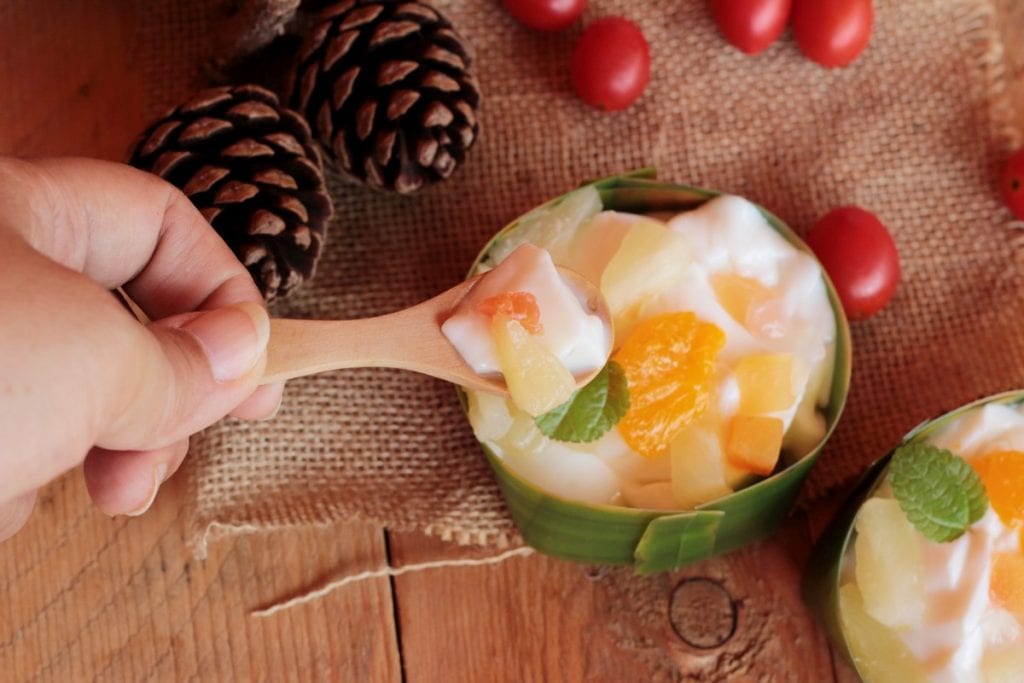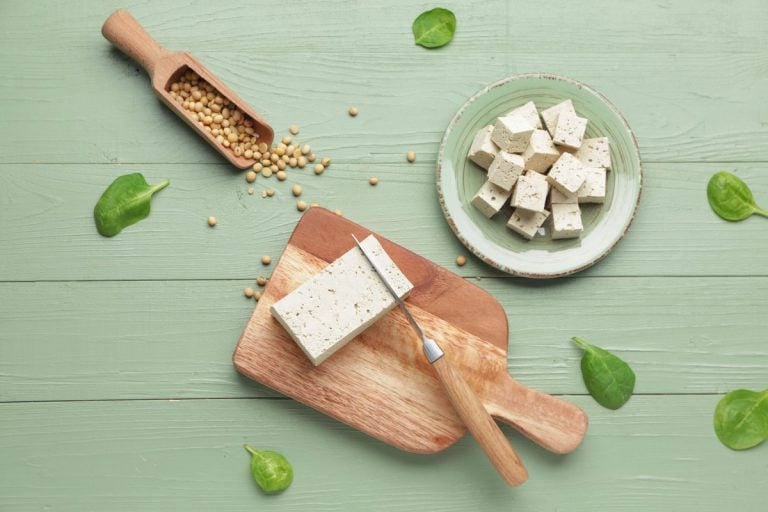Origins of tofu
For a long time it was considered the "vegan cheese", but today there are many vegetable alternatives to classic dairy products, and in truth tofu lends itself to many other recipes. However, there is a similarity to cheese: it too is obtained through a curdling process, in this case soybean juice. In Italy it has begun to gain popularity in recent years, but in Asian cuisine it has existed for millennia: legend has it that Liú Ān, a Chinese nobleman, discovered it in 164 BC, but many believe it was born by chance, from the mistake of a Chinese cook who curdled soy milk by mistake by adding seaweed, thus creating for the first time a compact and firm loaf. It is very probable, however, that tofu was born during the Han dynasty - 206 to 220 BC – and arrived in Japan in the 8th century AD. We are therefore talking about a product with ancient history, which only made its entry into the Western world towards the 1960s, thanks to the spread of a healthy food culture in which tofu fits perfectly.

Tofu: characteristics and varieties
There have been – and still exist – several false myths about soy and its derivatives. Last January, during Veganuary - the global challenge that invites you to give up meat for the whole month - we interviewed Dr. Silvia Goggi, a nutritionist specialising in plant-based foods, who assured us that not only is soy harmless, but it's also useful for our organism. It boasts cardio-protective action, it is a protein legume and rich in poly-unsaturated fatty acids, as well as being an excellent source of calcium and ferritin. There are many varieties on the market: there is velvet tofu of Japanese origin, with a soft and yielding consistency, perfect for being used also in desserts, and then dry tofu, a particular product with the lowest quantity of liquids, or again the solid kind obtained through the use of a cloth that absorbs liquids in the coagulation phase, giving life to a dense and firm loaf. Excellent, furthermore, is smoked tofu, and all the varieties enriched with aromatic herbs and spices.
How to use tofu in cooking
Time to get cooking, because there are many ways to cook tofu. It can also be eaten plain – choose good quality – but it gives its best when marinated: you can use soy sauce and maple syrup, a mix of extra virgin olive oil and mustard, or even plain olive oil with aromatic herbs (oregano, mint, marjoram) and a drop of lemon juice. Otherwise, grill it and then drizzle it with hot sauce, or use it to spice up fresh salads and savoury noodle dishes. Craving fish and chips? Tofu is perfect for recreating fake fish sticks: cut it into strips, dab it well to absorb moisture, wrap it in nori seaweed and then dredge it (as an alternative to egg, you can dip it in a batter made with water and flour, finally coat in breadcrumbs). Put the breaded sticks in the oven with a little olive oil and bake at 180°C for about twenty minutes. Why not try it fried? You can create paprika-flavoured morsels, breaded and deep fried, served with a yoghurt sauce (can be vegan) and mint. Without forgetting one of its best expressions: scrambled in a pan, for vegan English-style scrambled eggs. The process is quick and easy: just crumble the solid tofu, season it with a little salt, pepper and turmeric to give the yolk yellow colour, then cook it in a pan with the addition of a splash of vegetable milk of your choice. Serve it with toasted bread, a good cup of tea and sautéed mushrooms: voilà, your vegetable English breakfast is ready!

Creamy tofu recipes
The varieties of tofu, we have said, are manifold. Each one can be enhanced to the fullest with tailor-made recipes. Let's take velvet tofu, for example: a sort of creamy pudding, with an ideal consistency for both sweet and savoury preparations. In pastry, we can use it to create cheesecake, or last minute, practical and tasty desserts: blend it together with maple syrup or with a little sugar, pour it into a small glass and serve it with flakes of dark chocolate and raspberries, or chopped nuts and a sprinkling of ground cinnamon. You can also flavour the cream with chocolate melted in a bain-marie or a drop of coffee. If combined with a little whipped vegetable cream, it can create soft puddings to be used for irresistible spoon desserts, such as a classic "mattonella" or a mousse to be served with fruit in syrup. Again, why not use it to season pasta? It can be useful for adding a touch of creaminess to any sauce, especially those with vegetables: try preparing a sauce of blended mushrooms with velvet tofu, walnuts and scented with thyme, it will become the perfect cream for risotto and homemade pasta.
Recipe for risotto with pumpkin and smoked tofu
350 g carnaroli rice
500 g pumpkin
200 g smoked tofu
1 onion
Vegetable broth
Extra virgin olive oil
Salt
Pepper
Nutmeg
1 Tbsp. soy sauce
Sage
Clean the pumpkin, peel and remove inner filaments, and slice thinly. Heat the olive oil in a saucepan and sauté the chopped onion. Add the pumpkin, season it with salt, pepper and a little grated nutmeg and let it simmer for a few minutes over high heat. Add a ladleful of broth, cover the pan and cook for about twenty minutes until the pumpkin softens. Meanwhile, cut the smoked tofu into cubes and fry it in a pan with a little olive oil until crisp, together with a splash of soy sauce. Add the rice to the pumpkin casserole and start adding the hot broth until cooked through, stirring frequently. At the end of cooking, stir in a drizzle of olive oil and add the fresh sage leaves. Finally, add the smoked tofu, keeping a small part of it aside. Serve the risotto garnished with the remaining crispy tofu and a grating of black pepper.
a cura di Michela Becchi


 US tariffs: here are the Italian wines most at risk, from Pinot Grigio to Chianti Classico
US tariffs: here are the Italian wines most at risk, from Pinot Grigio to Chianti Classico "With U.S. tariffs, buffalo mozzarella will cost almost double. We're ruined." The outburst of an Italian chef in Miami
"With U.S. tariffs, buffalo mozzarella will cost almost double. We're ruined." The outburst of an Italian chef in Miami "With US tariffs, extremely high risk for Italian wine: strike deals with buyers immediately to absorb extra costs." UIV’s proposal
"With US tariffs, extremely high risk for Italian wine: strike deals with buyers immediately to absorb extra costs." UIV’s proposal Meloni: "Tariffs? If necessary, there will be consequences. Heavy impact on agri-food sector"
Meloni: "Tariffs? If necessary, there will be consequences. Heavy impact on agri-food sector" The Government honours the greats of Italian cuisine, from Bottura to Pepe. Massari: "Thank you, Meloni, the only one who listened to us"
The Government honours the greats of Italian cuisine, from Bottura to Pepe. Massari: "Thank you, Meloni, the only one who listened to us"






